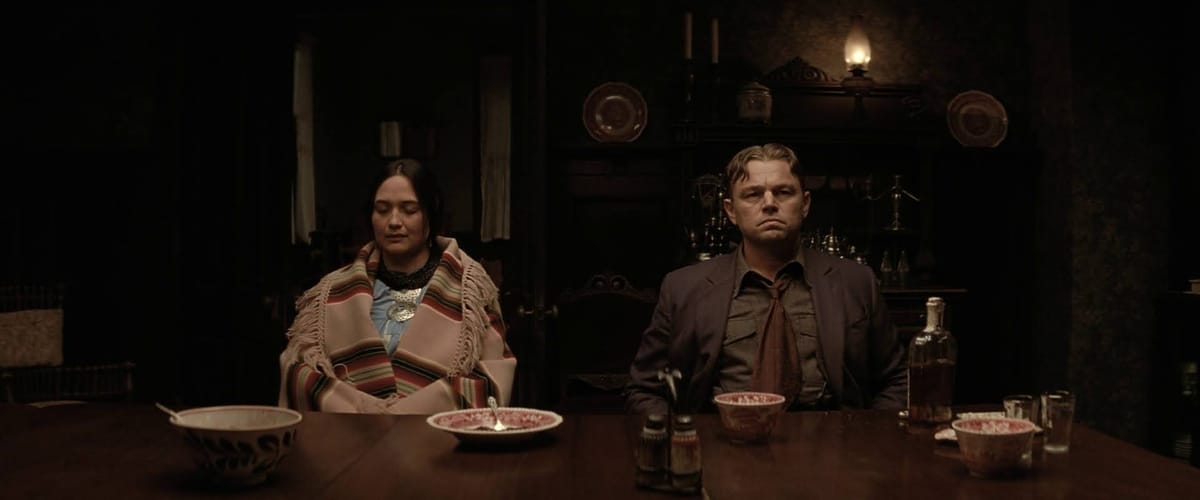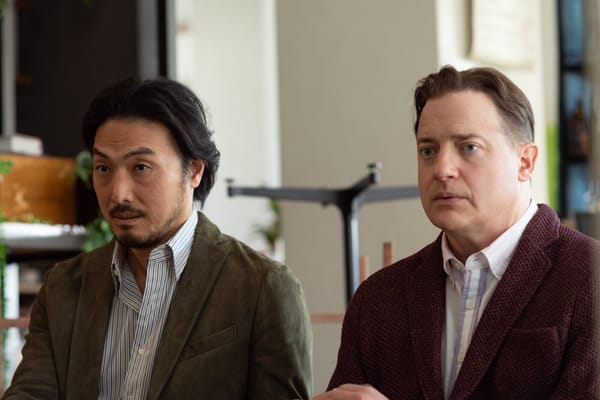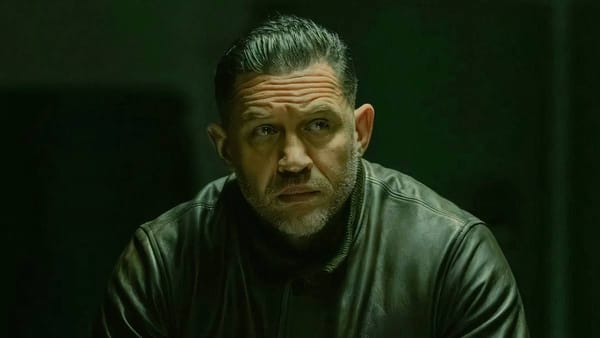A nation built on blood and broken treaties.

KILLERS OF THE FLOWER MOON is one of Martin Scorsese’s most devastating films — not because of its scale or violence, but because of the quiet, suffocating clarity with which it depicts complicity. There is no mystery to solve here. We know who is killing the Osage. The horror comes from watching an entire community, legal system, and nation choose not to care until the bodies form a pattern too large to ignore. Scorsese turns a true story into a mirror, and the reflection is unmistakably American.
Leonardo DiCaprio plays Ernest Burkhart as a man whose weakness is weaponized by stronger forces. He isn’t a criminal mastermind; he’s a coward who convinces himself that loving Mollie makes the harm he enables somehow less monstrous. His performance is all trembling nerves and inward collapse. Every choice Ernest makes feels like someone folding a lie into their own heartbeat until they can’t tell the difference. DiCaprio has played villains and fools before — but never someone so terrifying in his ordinariness.
Lily Gladstone becomes the film’s moral center by refusing to perform grief for the camera. Her Mollie Kyle carries sorrow like a quiet, enduring flame — never extinguished, never theatrical. She grounds the film in stillness, in the slow ache of a woman being robbed of her family, her health, her land, and her trust all at once. Gladstone’s performance is so restrained that even the smallest gestures — a narrowing of the eyes, a breath held too long — feel seismic. She gives the film its conscience.
Robert De Niro’s William Hale is the most chilling character Scorsese has crafted in decades: a man who wraps murder in politeness, genocide in paternal charm. Hale isn’t a sociopath; he’s a strategist of entitlement. Every handshake is a trap. Every kindness is a tactic. Scorsese shows how systemic evil is often enacted by men who smile, who help, who sit in the front pew on Sundays — men who believe the land should belong to them simply because everything else has.
Visually, the film operates like a ghost story told in daylight. The Osage homeland is beautiful, wide, alive — and every frame carries the ache of a place witnessing its own undoing. Scorsese refuses sensationalism; the violence is abrupt, matter-of-fact, deliberate. It’s history happening exactly as it happened: slowly, then all at once. Robbie Robertson’s score hums like a warning beneath it all — a heartbeat that knows what’s coming long before the characters do.
By the time the film reaches its powerful, self-reflexive ending — Scorsese himself acknowledging the limits of representation and the failures of history — KILLERS OF THE FLOWER MOON becomes something beyond a crime drama. It’s a confrontation. A reminder that some wounds aren’t healed by telling the story, only made visible again. A testament to a people who survived, and a nation still reckoning with the truth of why they had to.
It’s one of Scorsese’s great works: mournful, unflinching, and necessary.




